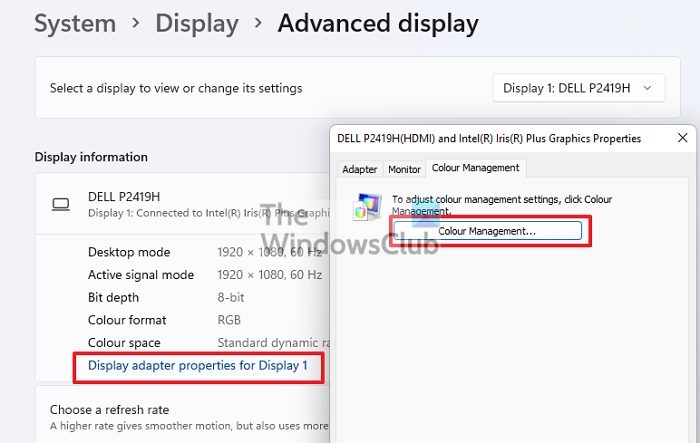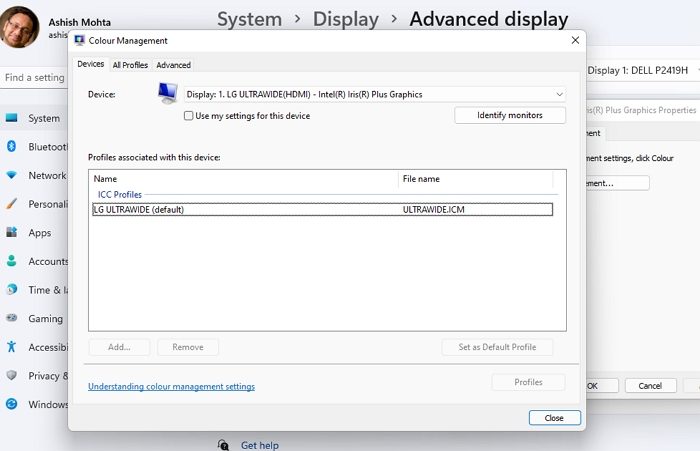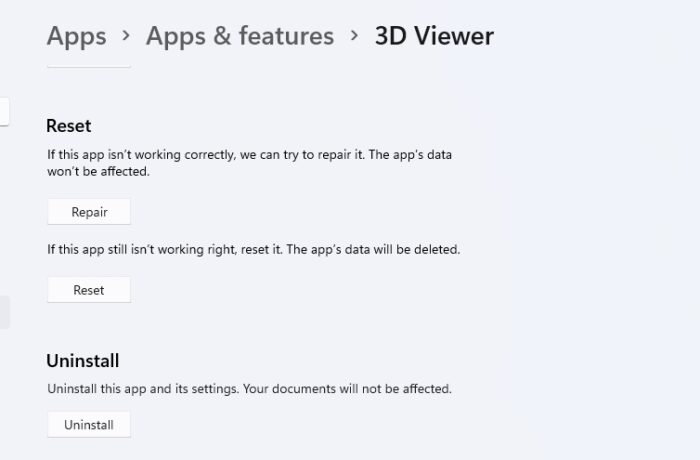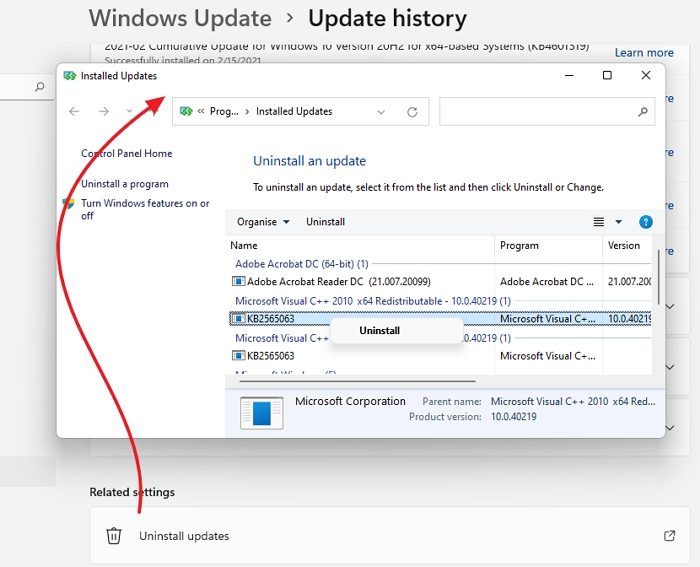Every monitor has a color profile, which is why an image may look better on one than another. The same applies to documents, web pages, and everything else. So how do you make an image on one monitor look the same as the other? Technically you cannot, but you can get close. You can do it via the Color Management tool in Windows. That said, when doing so, if the color management doesn’t work as expected, you will be stuck. It’s an essential tool for graphic designers or photographers. This post will guide how to fix the problem if the Color Management is not working in Windows 11/10.

What is a Color Profile?
Color Profile is a set of colors that the monitor can use to set the percentage of Red, Blue, and Green in the output. OEMs offer a default color profile for each monitor and the drivers for the best results. Since the underlying panel and the quality are different, the color profiles help me deliver the best color accuracy.
Apart from the default color profile, there are other ways to calibrate. The methods include hardware calibration, ICC, ICM, and more.
Color Management not working in Windows 11/10
This particular error can mean multiple things. It could be your monitor not displaying the colors correctly or the app looking different. It can be a color profile not reflecting the changes though you have set it correctly. Let’s look at the possible solutions.
- Reinstall the color profile
- Reset the app
- Update Graphics Driver
- Uninstall Recent Windows Update
Some of these may need admin permission.
1] Reinstall the color profile
Most OEMs offer users to download the color profile for their monitor. You can download it by going to the OEM website support section and searching for it with the monitor’s model number. Once you have the color profile, here is how to apply it.

- Open Settings (Win + I) and go to System > Display
- Select your display and then scroll to find Advanced display. Click to open
- Then click on the Display adapter properties for the Display link
- In the graphics properties windows, switch to Color Management
- Click on the Color Management button
- Select the monitor in the Color Management section and click on the Add button.
- Please select the color profile or ICC file and apply it.

Read: How to restore default Display Color settings.
2] Reset the app
If the problem is with a particular app, you may want to reset it. There are two ways to do this. The first is by reinstalling the app or looking for a color profile available. The latter is applicable only for apps that support it.

You can also choose to reset the app by going to Settings > Apps > Apps & Features. Then locate the app, click on the three-dot menu, and choose to reset.
Read: Color Calibration keeps resetting
3] Update or Rollback Graphics Driver Update
Any recent driver update or a missing update that conflicts with Windows can cause this problem. A rollback would be a good idea if this happened right after a Driver update.
To rollback, you can go Settings > Windows Update > Update History > Uninstall the driver update. Look for a driver updated, and choose to uninstall it. You can then download the previous version of the driver from the OEM website and then install it. You can also consider a Rollback via the Devices Manager.
Read: How to associate Color Profiles with a device
4] Uninstall Recent Windows Update

Many a time, one of the recent Windows Updates might cause the problem. It has been reported multiple times. So if the problem showed up right after an update, you need to uninstall and check if that fixes it.
- Go to Settings (Win + I)
- Navigate to Windows Update > Update history
- The screen will display a list of recent updates. Scroll down to find Uninstall updates
- Click on it to open the classic Windows Updates panel
- Look for updates starting with KB in the name.
- Right-click and choose to uninstall it.
Check if your monitor colors look as it was before the update.
How can I change the color in Windows 11/10?
Windows 11, like previous versions of Windows, offers Personalization features for all the users. You can use the settings to change theme, colors, background, accent color, dark and light mode, and so on. The feature also ensures any change made to one account that doesn’t reflect another user account and can be synced between devices.
Read: How to create and manage a new Color Profile
What color profile should I use for my monitor?
If you are talking about the monitor profile, which can be changed using the hardware button, then it will depend on what you plan to do on the monitor. There are different modes such as gaming, reading, movie, etc. So make sure to select accordingly.
If you are talking about the color profile file, make sure it follows the sRGB standard, especially if you are a photographer.
I hope the post was easy to follow, and you were able to fix the color management issue on Windows.